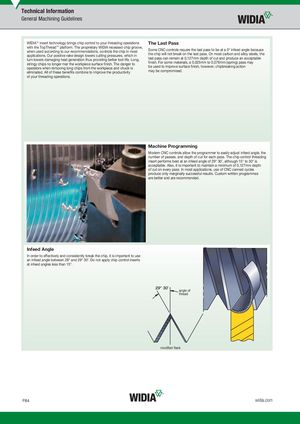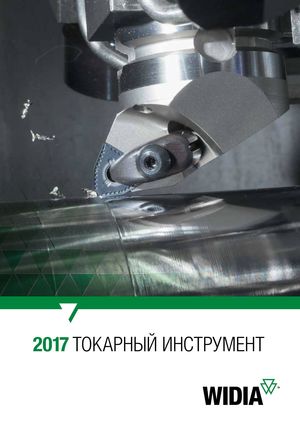Общий каталог Widia 2017 - страница 682
Навигация
- Table of Contents
- Turning
- Turning • ISO Inserts
- Turning • Tools for External Turning and Internal Boring
- Turning • Tools for External Turning and Internal Boring
- Turning • Tools for Small Hole Boring
- com E1Turning • Grooving and Cut-Off
- Turning • Threading
- Indexable Milling
- Indexable Milling • Face Mills
- Indexable Milling • Chamfer Mills
- Indexable Milling • 90° Shoulder Mills
- Indexable Milling • Helical Mills
- Indexable Milling • Slotting Mills
- Indexable Milling • Copy Mills
- Solid End Milling
- Solid End Milling • High-Performance Solid Carbide End Mills
- Solid End Milling • General Purpose Solid Carbide End Mills
- Solid End Milling • High-Performance High-Speed Steel (HSS-E/PM)
- Solid End Milling • Burs
- Holemaking
- Holemaking • High-Performance Solid Carbide Drills
- Holemaking • Modular Drills
- Holemaking • Indexable Drills
- Holemaking • Modular Drills
- Holemaking • Indexable Drills
- Holemaking • Hole Finishing
- Tapping
- Tapping Portfolio
- Index by Order Number
- Index by Catalogue Number
- Global Contacts
- Informational Icons Guide
- Material Overview • DIN

Technical Information General Machining Guidelines WIDIA™ insert technology brings chip control to your threading operations The Last Pass with the TopThread™ platform. The proprietary WIDIA recessed chip groove, when used according to our recommendations, controls the chip in most Some CNC controls require the last pass to be at a 0° infeed angle because applications. Our positive rake design lowers cutting pressures, which in the chip will not break on the last pass. On most carbon and alloy steels, the turn lowers damaging heat generation thus providing better tool life. Long, last pass can remain at 0,127mm depth of cut and produce an acceptable stringy chips no longer mar the workpiece surface finish. The danger to finish. For some materials, a 0,025mm to 0,076mm (spring) pass may operators when removing long chips from the workpiece and chuck is be used to improve surface finish, however, chipbreaking action eliminated. All of these benefits combine to improve the productivity may be compromised. of your threading operations. Machine Programming Modern CNC controls allow the programmer to easily adjust infeed angle, the number of passes, and depth of cut for each pass. The chip control threading insert performs best at an infeed angle of 29° 30’, although 15° to 30° is acceptable. Also, it is important to maintain a minimum of 0,127mm depth of cut on every pass. In most applications, use of CNC canned cycles produce only marginally successful results. Custom written programmes are better and are recommended. Infeed Angle In order to effectively and consistently break the chip, it is important to use an infeed angle between 28° and 29° 30'. Do not apply chip control inserts at infeed angles less than 15°. angle of thread modified flank F84 widia.com
 Каталог Widia токарный инструмент 2017
Каталог Widia токарный инструмент 2017 Каталог Widia трохоидальное фрезерование
Каталог Widia трохоидальное фрезерование Каталог Widia техническое руководство по разверткам
Каталог Widia техническое руководство по разверткам Каталог Widia фрезы со сменными пластинами 2016
Каталог Widia фрезы со сменными пластинами 2016 Каталог Widia достижения 2020
Каталог Widia достижения 2020